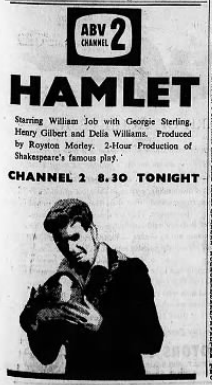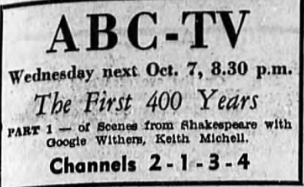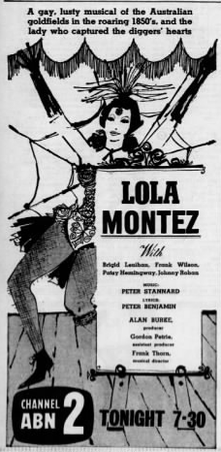Related Research Articles

Here's Humphrey was an Australian children's television series produced by Banksia Productions for the Nine Network, which first aired on 24 May 1965 and last went to air in 2008.

Television in Australia began experimentally as early as 1929 in Melbourne with radio stations 3DB and 3UZ, and 2UE in Sydney, using the Radiovision system by Gilbert Miles and Donald McDonald, and later from other locations, such as Brisbane in 1934.

Albert Watson Newton was an Australian media personality. He was a Logie Hall of Fame inductee, quadruple Gold Logie award-winning entertainer, and radio, theatre, and television personality and compere.
James Lawrence Kemsley OAM was an Australian cartoonist who was notable for producing the comic strip Ginger Meggs between 1984 and 2007.
Community television in Australia is a form of free-to-air non-commercial citizen media in which a television station is owned, operated and/or programmed by a community group to provide local programming to its broadcast area. In principle, community television is another model of facilitating media production and involvement by private citizens and can be likened to public-access television in the United States and community television in Canada.

Channel 44 is a free-to-air community television channel in Adelaide, South Australia. C44 features locally and nationally made content and has been broadcasting since 23 April 2004. Previously known as C31 when on analogue television, C44 made the switch to digital on 5 November 2010 and switched off its analogue signal on 31 May 2012. C44 airs a range of local, interstate and international content that is relevant to the local community.

Deadly Earnest was a late-night horror host active on Australian television between 1959 and 1978. Originated as a live host of a horror film package for Perth's TVW-7 by 1959, the character was most active between 1966 and 1972 when adopted by the 0-10 Network. Broadcast weekly, Deadly Earnest's Aweful Movies featured mainly B-grade horror movies introduced by local actors with a tongue-in-cheek characterization. The program was renowned for screening low-budget B-grade supernaturally themed cinema, even going so far as to present the Worst Movie of the Year on at least one occasion.
The One Day of the Year is a 1958 Australian play by Alan Seymour about contested attitudes to Anzac Day.
The Torrents is a 1955 Australian play by Oriel Gray, set in the late 19th century, about the arrival of a female journalist in an all-male newspaper office, and an attempt to develop irrigation-based agriculture in a former gold mining town.
Roundabout is a television movie, or rather a live television play, which aired on Australian television in 1957. Broadcast 4 January 1957 on ABC station ABV-2, it is notable as the first example of television drama produced in Melbourne.

Close to the Roof is a 1960 Australian live television play which aired on ABC. Broadcast 14 December 1960 in Sydney, it was kinescoped ("telerecorded") and shown in Melbourne on 25 January 1961. Australian TV drama was relatively rare at the time.
"Wall to Wall" is the sixth television play episode of the first season of the Australian anthology television series Australian Playhouse. "Wall to Wall" was written by Ann Kinloch and directed by Eric Taylor and originally aired on ABC on 23 May 1966 It starred Gwen Plumb and was shot in Sydney.

Hamlet is a 1959 Australian TV play starring William Job and produced by Royston Morley.
"The Tower" is a 1964 TV play broadcast by the Australian Broadcasting Corporation. It aired on 2 December 1964 as a stand-alone in Melbourne and on 28 April 1965 as part of Wednesday Theatre in Sydney. It aired on 6 January 1965 in Brisbane. It was based on a play by Hal Porter and directed by Christopher Muir in the ABC's studios in Melbourne.

The First 400 Years is a 1964 Australian television play. It was filmed in Adelaide. The stars were performing in the play around Australia for JC Williamsons.

You Can't Win 'Em All is a 1962 Australian television play directed by Patrick Barton. Filmed in London, it was based on a play by Alun Owen which had been previously filmed by the BBC in 1962.
C'Mon Kids was an Australian children's television show which screened on the Nine Network from 1986 to 1990. It was produced in Adelaide, South Australia and screened on weekday afternoons.
Fly By Night is a 1962 Australian TV play broadcast on the ABC and filmed in London. Written expressly for television, it starred Sophie Stewart who was also in The Little Woman.

Lola Montez was a 1962 Australian TV play which was based on the musical of the same name.

The Devil Makes Sunday is a 1962 Australian television play by New Zealand-born author Bruce Stewart. It was broadcast live from Melbourne, and taped and shown in other cities at a later date.
References
- 1 2 3 Heading, Rex (1996). Miracle on Tynte Street: The Channel Nine Story. Wakefield Press. p. 41. ISBN 9781862543904.
- ↑ Vagg, Stephen (18 February 2019). "60 Australian TV Plays of the 1950s & '60s". Filmink.
- ↑ "Housewife's Play". Sydney Morning Herald. 22 October 1962. p. 14.
- ↑ "Six Top Jazzmen on Show". Sydney Morning Herald. 28 October 1962. p. 92.
- ↑ "SA Play Shown on TV". Sydney Morning Herald. 3 November 1962. p. 8.